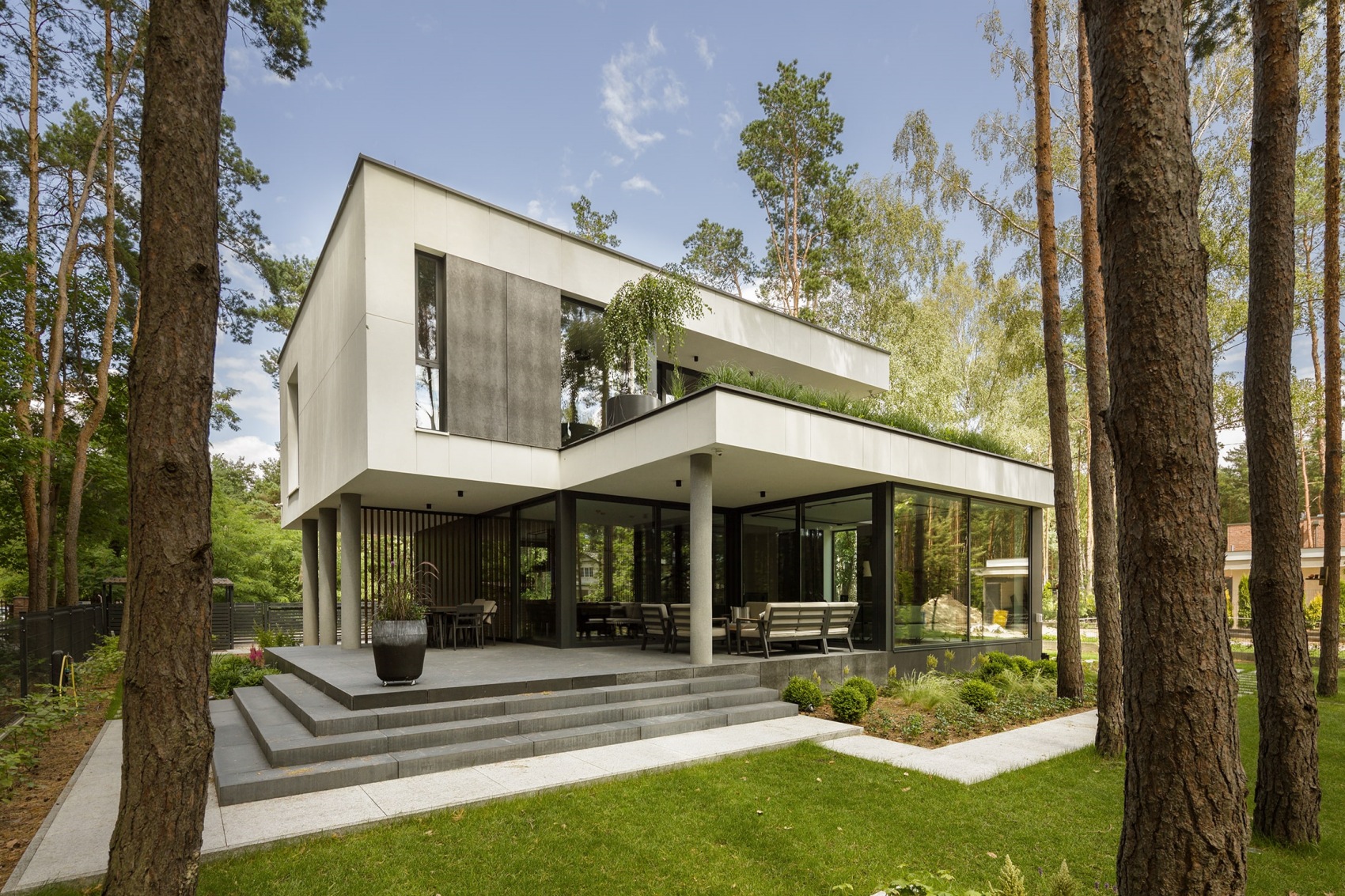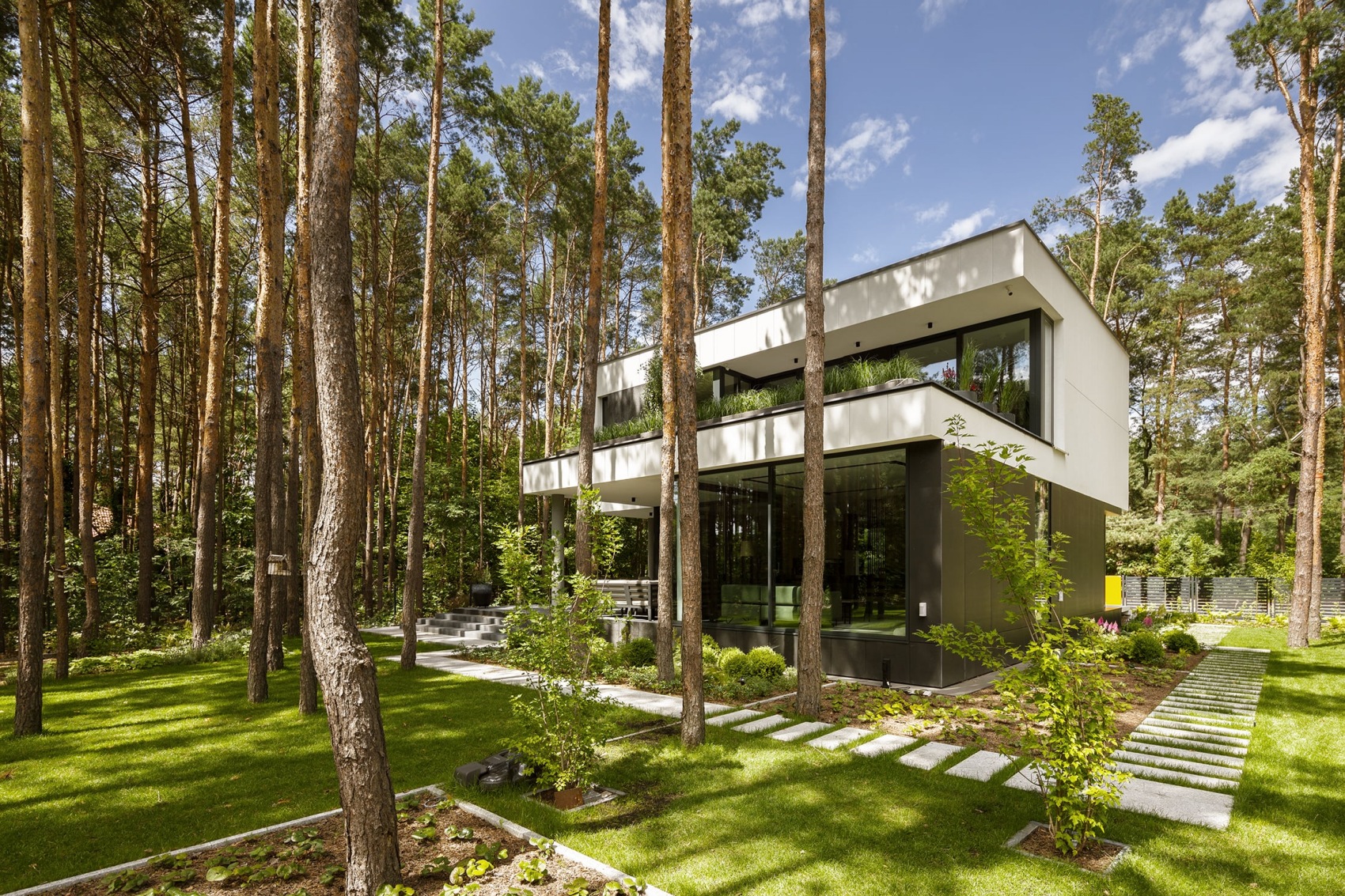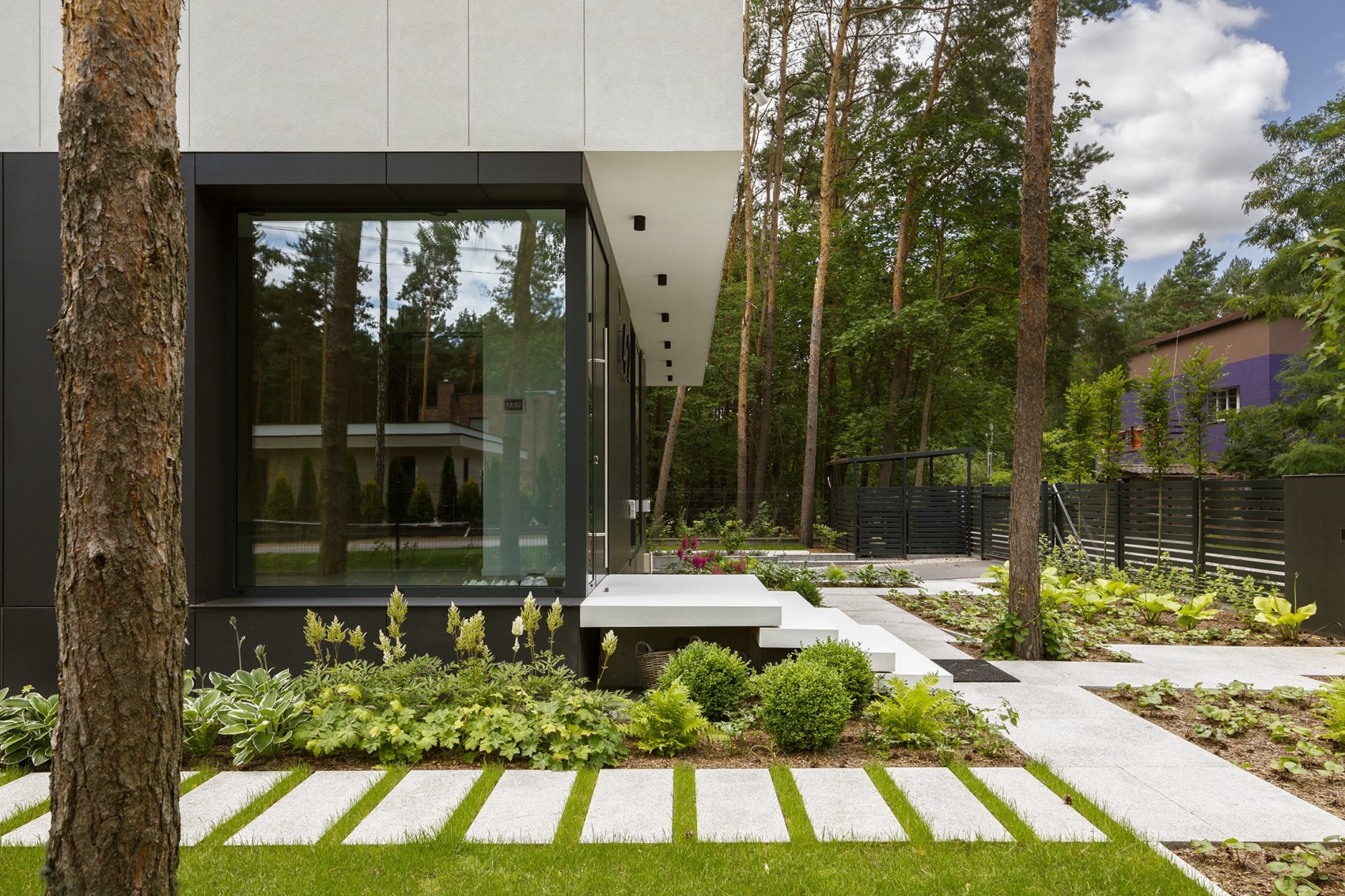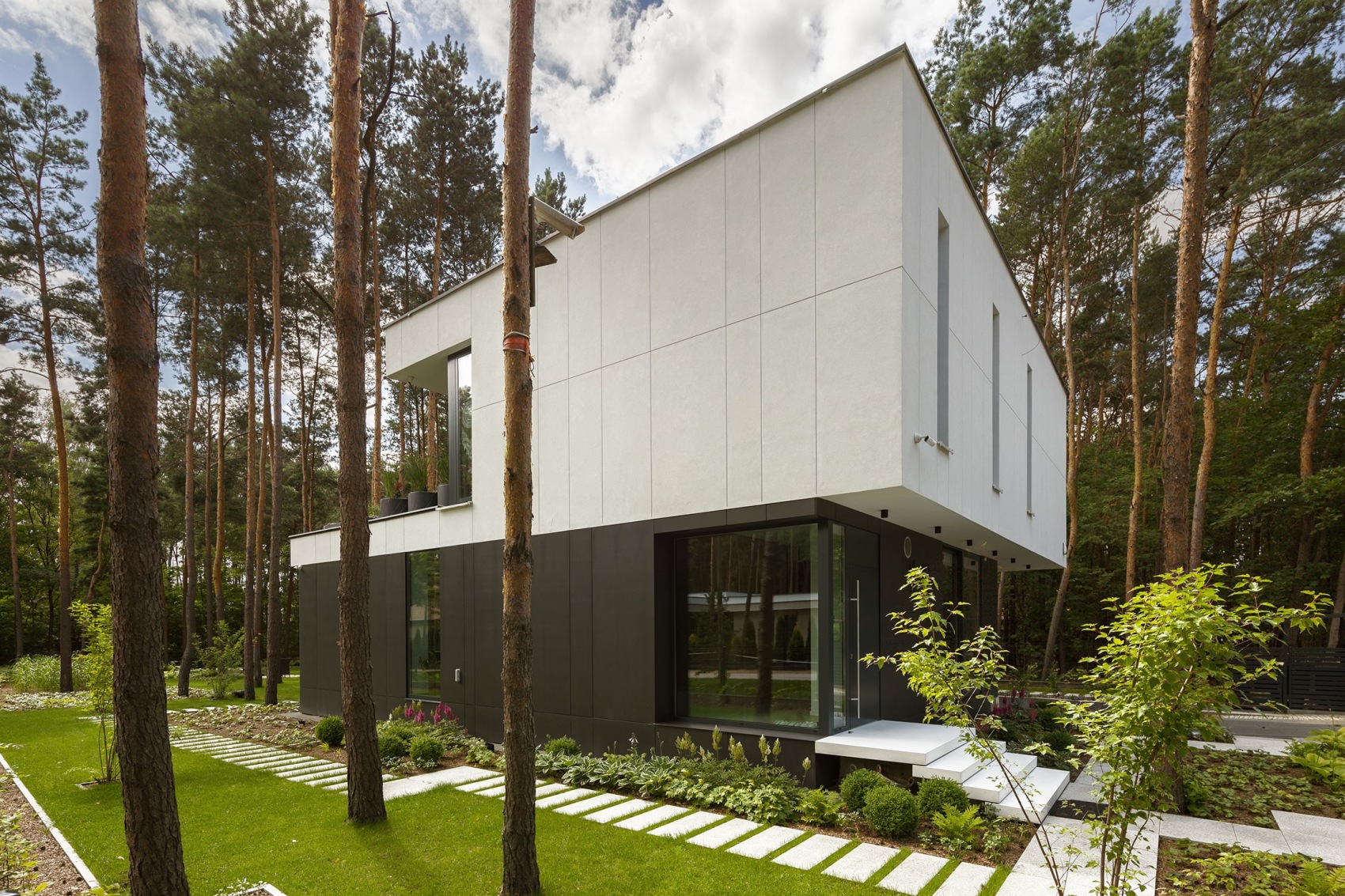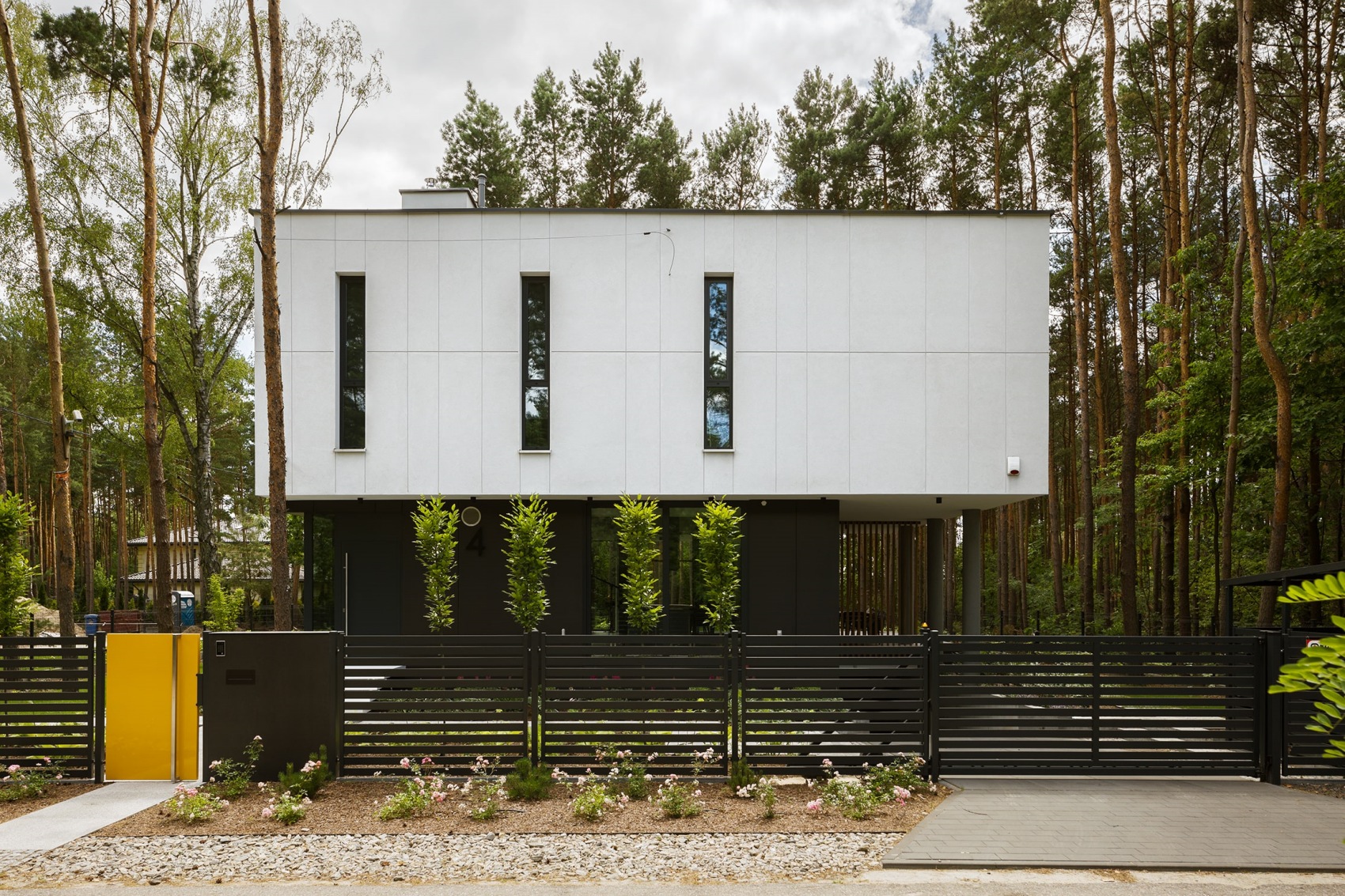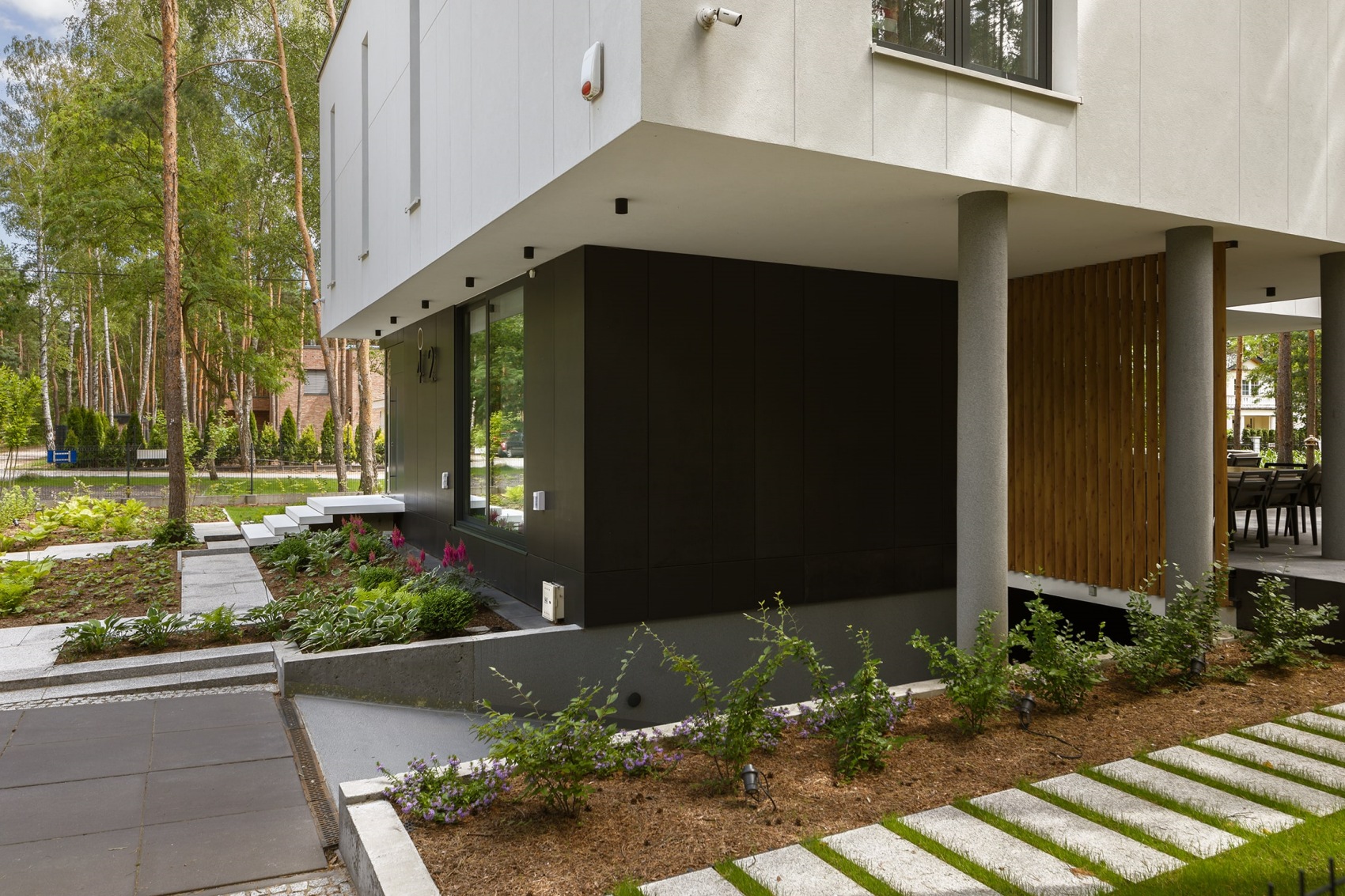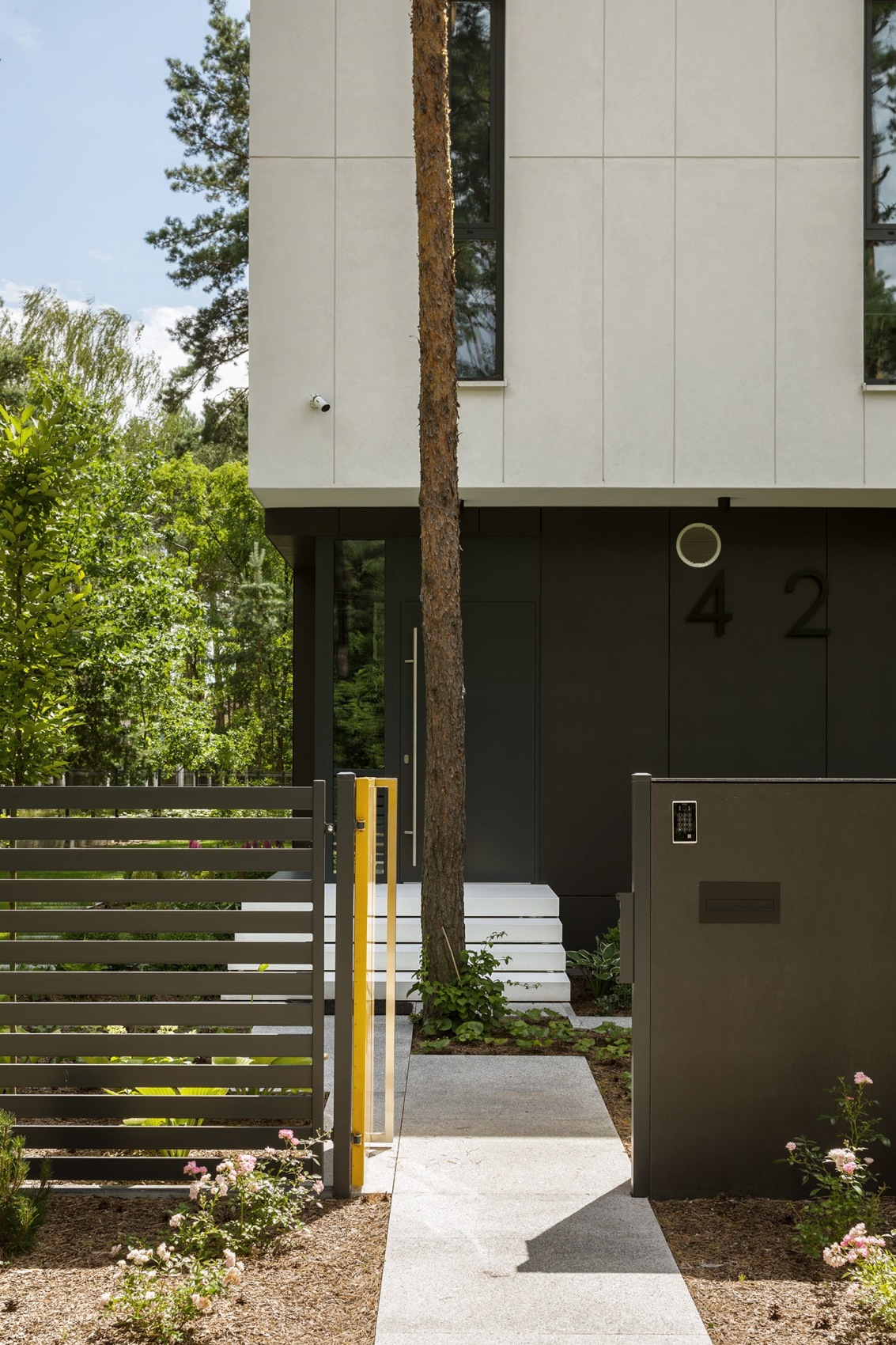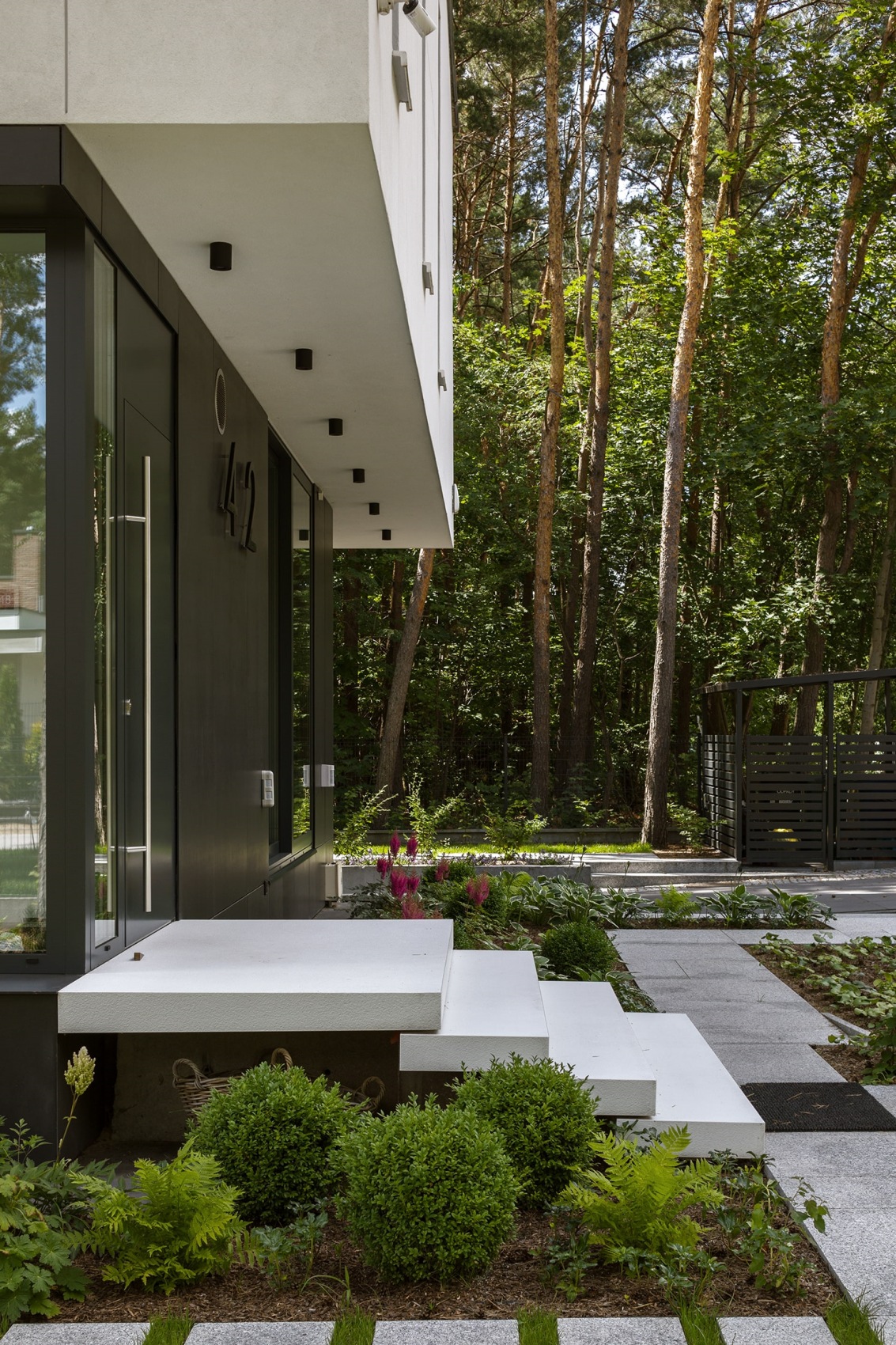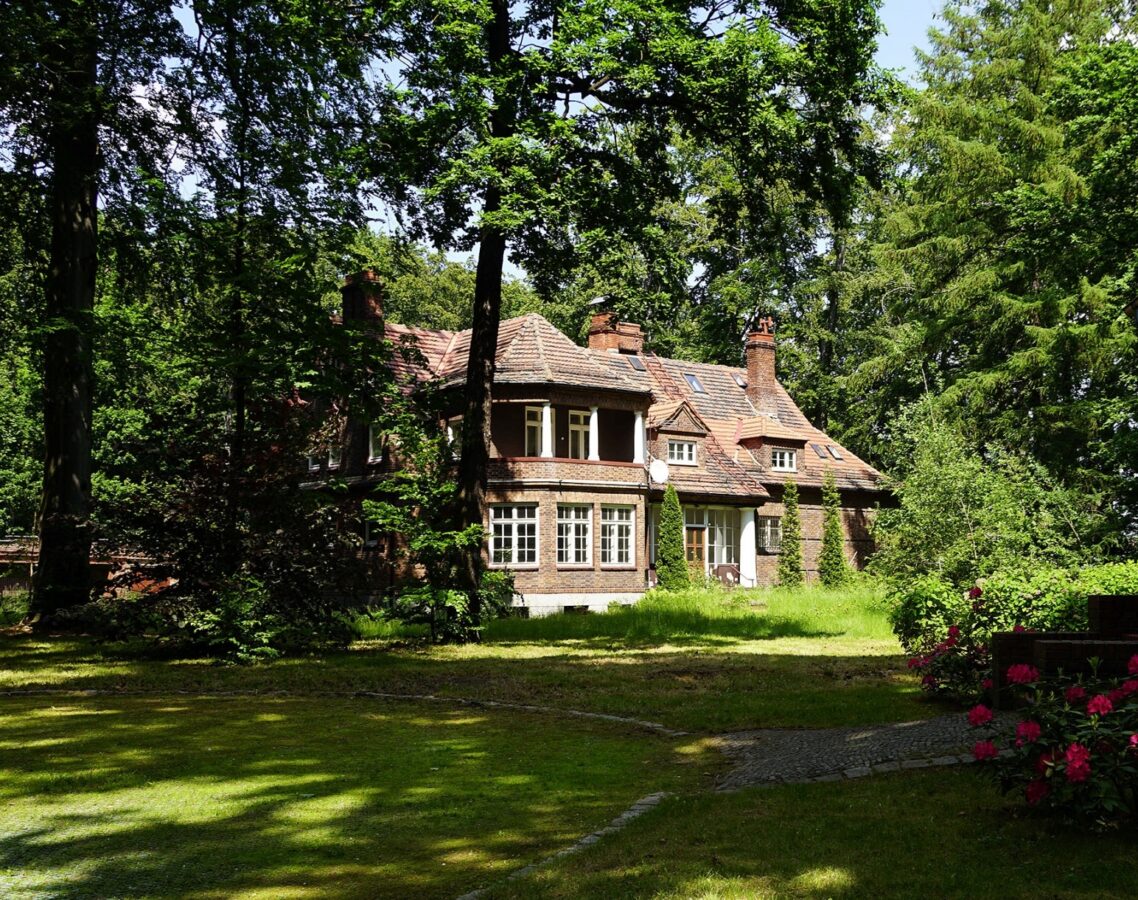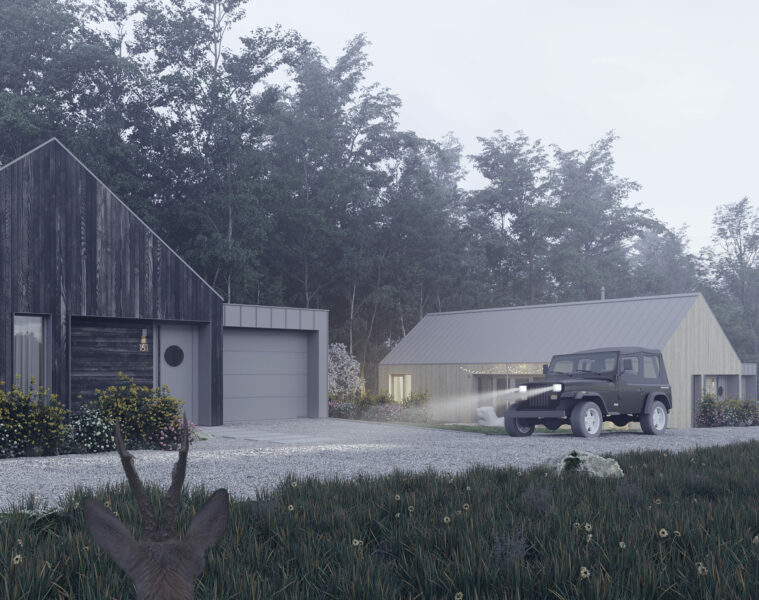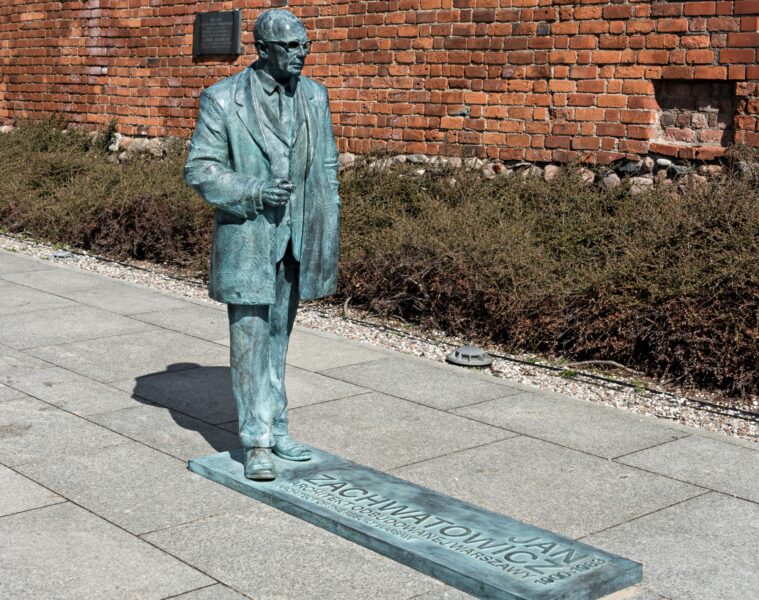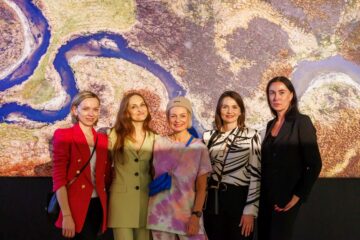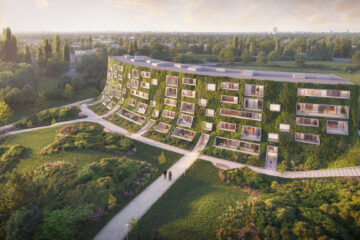The building was designed by architects from the Exterio studio. The house is located in Radość, a part of Warsaw’s Wawer district. It is a luxury villa immersed in greenery. When designing the building, the architects wanted to interfere as little as possible with the natural landscape.
This is a place where intimate buildings dominate. Radość is a former summer resort located on the Otwock line. Today it is part of Warsaw’s Wawer district. The picturesque surroundings of the once popular resort are often visited by residents of the capital. There are numerous trails for walkers and cyclists. The village has also retained its former identity. Fans of architecture will certainly enjoy the beautiful villa buildings. Among the attractions of Radość are the Świdermajers, richly decorated wooden houses from the turn of the 19th and 20th centuries.
When designing the house, the architects wanted to take advantage of the potential of the area, the natural qualities of the plot and the proximity of the pine forest. The architects limited interference with the existing landscape and therefore limited the footprint of the plot, with some of the space for a garage or utility rooms being hidden in the underground storey. The building structure, monumental at first sight, blends harmoniously into the surrounding nature. The house consists of two staggered blocks, which gives dynamics to its simple, geometric forms.
The beauty of simplicity
The first storey of the building appears to float above the base like a box suspended in the trees. This impression is reinforced by the contrasting colours used on the façade – graphite on the ground floor, which blends in with the shady forest surroundings, and white on the upper storey, which reflects the sun’s rays and shines between the tall tree trunks.
The ground floor has been designed as a glazed pavilion. There is a covered terrace that adjoins the corner living room. The greenery surrounding the building can be seen from here. This is within easy reach. The forest can also be admired from the terrace on the first floor, which was created through a clever offset of the first storey from the ground floor. This solution also made it possible to cover the terrace on the ground floor.
The project, apart from blending in with the surroundings, was also intended to provide residents with direct contact with nature and a sense of intimacy,” says architect Marcin Klukowski of the Exterio studio, co-founder of the Hola Group.
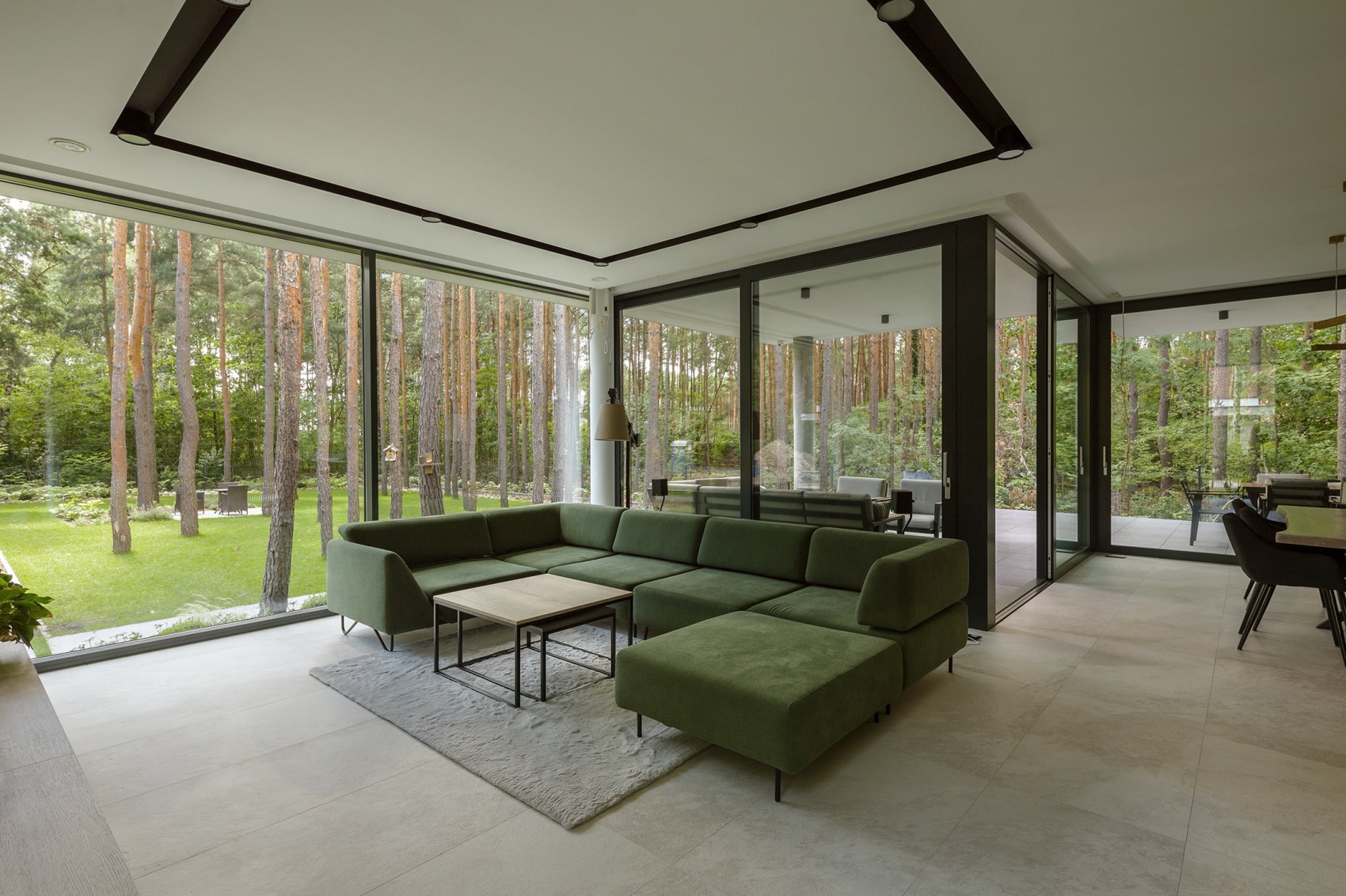
The solution to this intention was to situate terraces and large glazed areas on the side of the garden, which have their indispensable function in illuminating the interiors and adding to their impression of spaciousness and openness to the outside environment. The interpenetration of one space with another is enhanced by the use of the same finishing materials in the rooms and on the terraces. On the ground floor, bright stoneware floors and white concrete slabs dominate – adding to the brightness.
The villa is furnished in a modern style. Wood reigns here, giving the interiors a warm yet elegant feel. On the ground floor, a spacious living room connects to the dining room, at the heart of which stands a massive wooden table. There is also a fireplace, which further warms the interior and fosters an atmosphere of relaxation and rest. The private part of the home was created on the first floor. Due to the flat roof, there are no haunches there. On the first floor, bedrooms with bathrooms and dressing rooms have been designed.
Doda in Radość
The house was the protagonist of the reality show ‘Doda. 12 steps to love’. The programme was broadcast on Polsat. For the duration of its production, Dorota Rabczewska “Doda” left her flat in Warsaw and lived for a few weeks in a villa in Radość, where episodes of the programme were recorded.
design: Marcin Klukowski, Monika Bronikowska, Adam Bronikowski
photography: Yassen Hristov
Read also: single-family house | Modernism | elevation | greenery | whiteMAD on Instagram

